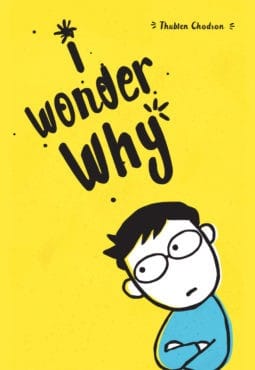Copyright © 1999-2018 by Thubten Chodron. Strictly for free distribution and not to be sold. Currently published by Kong Meng San Phor Kark See Monastery, Singapore. First published in 1988 by Amitabha Buddhist Centre, Singapore.
About the book
Written in clear and engaging language, this book presents the Buddhist approach to the fundamental issues and concerns of daily life that any modern individual may have. Common misconceptions about Buddhism are also addressed. I Wonder Why provides a foundation for beginning students as well as a useful refresher for more senior students.
Overview of contents
- The Essence of Buddhism & The Buddhist Traditions
- The Buddha
- Idols & Offerings
- Prayer & Dedicating Positive Potential
- Rebirth vs Creation
- Karma: The Functioning of Cause & Effect
- Impermanence & Suffering
- Death
- Attachment, Detachment & Desire
- Women & The Dharma
- Monks, Nuns & Lay Devotees
- Meditation
- Steps Along the Path
- Selflessness
- Vajrayana
Excerpt: The Buddha That We Will Become
The third way to understand the Buddha that we take refuge in is as the appearance of our own Buddha nature in its fully developed form. All sentient beings have the potential to become Buddhas, for we all have the clear nature of the mind. At the present our mind is clouded by afflictive emotions (klesa) and actions (karma). Through constant practise, we can remove these defilements from our mind stream and nourish the seeds of all the beautiful potentials we have. Thus, The Buddha 19 each of us can become a Buddha when this process of purification and growth is completed. This is a feature unique to Buddhism, for in most other religions there is an irreparable gap between the divine being and the human being. However, the Buddha said that each sentient being has the potential for perfection. It is only a matter of engaging in the practise and creating the causes to reach perfection.
When we visualise the Buddha or a deity and think of him/her as the future Buddha that we will become, we are imagining our now latent Buddha nature in its completely developed form. We are thinking of the future time when we shall have completed the path of purification and growth. We are imagining the future in the present, and in this way reaffirming our own latent goodness. This also helps us to understand that what ultimately protects us from suffering is our own practise and achievement of enlightenment.

